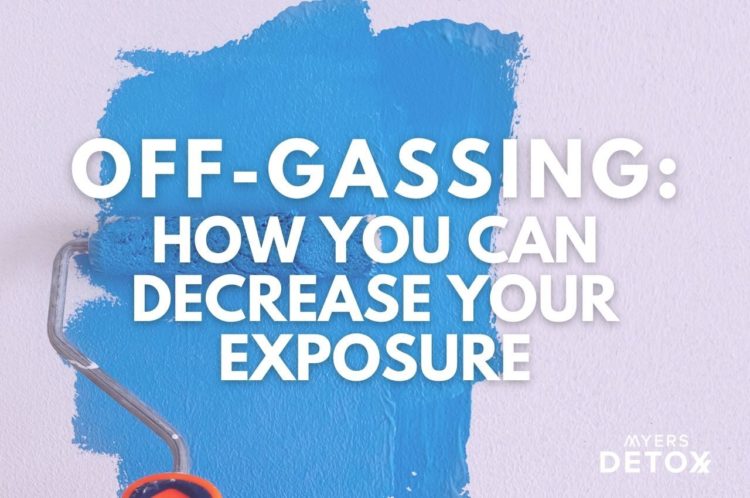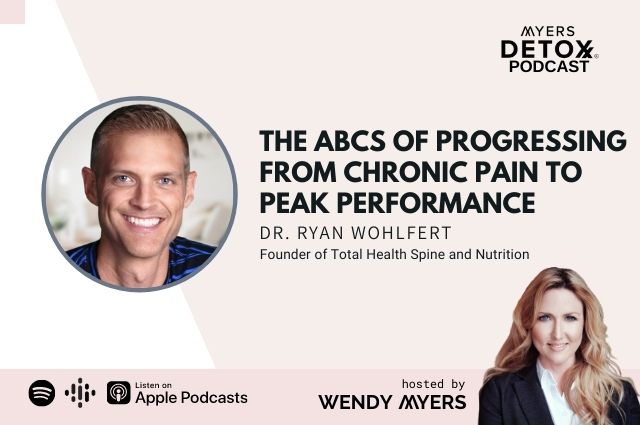Off-Gassing: How You Can Decrease Your Exposure

If you’ve even unwrapped a new carpet or brought home a freshly manufactured piece of furniture, you may be familiar with the chemical-laden scent that these products emit.
The same goes for house renovations and installations — what is that “new” smell that seems to permeate your home when you redecorate?
For some, the scent of new furnishings is so familiar they may not even notice it. For others, however, the chemicals coming off your new home additions may cause almost immediate aversions. Why? Those chemicals don’t belong in your home, nevertheless streaming through your air and polluting every breath you take.
Unfortunately, the use of volatile compounds has only increased over the years, and the side effects range from headaches and dizziness to potentially life-threatening.
In this article, you’ll learn:
- What off-gassing is
- Why you likely have off-gassing chemicals in your home now
- The dangers of this indoor air pollution
- Some of the most harmful chemicals lurking in your home environment
- How to decrease your exposure to off-gassing
What Is Off-Gassing?
Off-gassing refers to the release of volatile compounds (also called volatile organic compounds or VOCs) from household products and furniture. These harmful chemicals pose a silent threat as their airborne release can infuse into the air in your home, creating an unhealthy and often unsafe, environment.
There is a broad range of potential sources of off-gassing chemicals. Some of the most common include carpeting, furniture, mattresses, paint, and household goods like dryer sheets and air fresheners.
To date, more than 80,000 chemicals have been introduced into our environment in just the last 50 years. What makes this even more concerning is that most of these chemicals have yet to be studied for safety — and the ones that have produced concerning results.
How Do You Know If You’re Experiencing Off-Gassing In Your Home?
One of the common traits of off-gassing chemicals is that “new carpet” or “new furniture smell.”
The funny smells that can come with new furniture, new installations, or construction on your home are all signs of off-gassing.
Have you ever taken home a new carpet, unrolled it from its packaging, and then became immediately assaulted with the scent? That’s the off-gassing of VOCs.
But your carpets aren’t the only culprits of off-gassing; other common furniture includes mattresses, chairs, and sofas. In addition, particleboard and plywood also contain VOCs and household cleaners like soaps, glass cleaners, and detergents.
Even printers, toys, electronics, floor coverings, and newspapers can release VOCs and pollute your air environment.
While the first month is typically the most potent time for off-gassing of VOCs, some chemicals can linger in the air and continue to off-gas from your products for months or even years. Carpets are the worst culprit of all, with the potential to emit VOCs for up to five years after installation.
How Does Off-Gassing Affect Your Body?
The chemicals involved in off-gassing can impact your body in a variety of ways depending on the specific chemical and the amount of exposure. Side effects can range from irritating to life-threatening and include but are not limited to[1]:
- Immune dysfunction
- Anemia
- Drowsiness
- Dizziness
- Rapid or irregular heartbeat
- Headaches
- Tremors
- Fatigue
- Nausea
- Confusion
- Unconsciousness
- Sore throat
- Cognitive decline
- Attention deficits
- Limb abnormalities
- Burning eyes, nose, and throat
- Lung damage
- Death
- Damage to your mucus membranes
- Central nervous system dysfunction
- Certain types of cancer
The Chemicals Involved In Off-Gassing
There are thousands of chemicals being used in your home products and furniture that are involved in off-gassing. Some of the most common and most dangerous include:
Formaldehyde
Formaldehyde is a colorless gas with a strong odor that’s flammable at room temperature. This chemical can be found in a large range of products such as glues, paints, coatings, lacquers, finishes, and fabric softeners.
In addition to off-gassing from furniture in your home, you may come into contact with formaldehyde in cigarette smoke and emissions from fuel-burning appliances. The primary route of toxic exposure to formaldehyde is through breathing contaminated air.
Along with irritation of the skin, eyes, nose, and throat, high levels of exposure to formaldehyde may cause some types of cancers[2].
Polyurethane
Polyurethane is a plastic material that can be tailored to be either rigid or flexible and is used in a broad range of applications, including cushioning for furniture, mattresses, bedding, carpet underlay, coatings, adhesives, and wood panels. You can even find polyurethane in the soles of your sneakers and in sportswear.
One of the most common uses of polyurethane in furniture is polyurethane foam which works to make furniture more comfortable and supportive. If you’ve ever heard of memory foam — that’s polyurethane[3].
Research shows that polyurethane foam releases a number of VOCs, which can be dangerous to both adults and children. In fact, a rising concern grows around the use of polyurethane in cribs and its impact on infants[4].
One of the primary VOCs released from polyurethane foam is isocyanates. Exposure to isocyanates can lead to irritation of your skin, eyes, nose, throat, and mucous membranes, along with chest tightness, difficulty breathing, and asthma. What’s more, isocyanates have been found to be carcinogenic in animal studies[5].
Benzene
Benzene is a chemical compound that’s colorless or light yellow and is liquid at room temperature. It has a sweet odor and is highly flammable but evaporates into the air very quickly.
Benzene can be formed in small amounts from natural processes, but toxic levels come from human activities and applications. In the United States, benzene is used ubiquitously. In fact, this compound ranks in the top 20 chemicals for production volume.
Benzene is used in the making of plastics, resins, nylon, and synthetic fibers. It’s also commonly used to make dyes, rubbers, and lubricants — all of which can end up in your home.
Although you may come into contact with benzene from outdoor air, the vast majority of benzene lives in your indoor air environment and comes from off-gassing furniture, glues, and paints.
Benzene can pose serious health risks as its mechanism in your body is to prevent your cells from working properly. As an example, benzene exposure may cause your bone marrow to not produce enough red blood cells, leading to anemia. It can also damage your immune system, causing a loss of white blood cells or interfering with antibody production.
Drowsiness, headaches, confusion, tremors, and irregular heartbeat are all common side effects of toxic benzene exposure[6][7].
Ammonia
Ammonia is another widely produced chemical in the United States. It has a sharp, suffocating smell and is highly irritating. Although this compound is essential in the body and plays a role in protein synthesis and the synthesis of other complex molecules, its effects can be quite harmful at toxic levels.
Industrially, ammonia is used frequently in agriculture as a fertilizer. In your home, it’s commonly used in manufacturing plastics, fabrics, and dyes.
The most common route of exposure to ammonia is through inhalation. In your body, ammonia reacts with water to produce the compound ammonium hydroxide. This chemical compound is incredibly corrosive and can damage your cells on contact.
Exposure to ammonia may result in burning eyes, nose, and throat. Due to its corrosive nature, it can damage the mucous membranes in your eyes, lungs, skin, and gastrointestinal tract. In more severe cases, it can result in blindness, lung damage, or even death[8][9].
Toluene
Toluene is a common solvent, it’s colorless and water-soluble and has the scent of paint-thinner. This chemical is commonly used in oil refining and in the manufacturing of paints, lacquers, inks, stain removers, and glues.
When exposed, the primary target for toluene is your central nervous system (CNS). Some of the common side effects of toluene exposure include fatigue, sleepiness, headaches, sore throat, irritation of the upper respiratory tract and eyes, dizziness, and nausea.
However, more serious CNS symptoms can also occur as toluene may cause depression of your CNS function. Some human studies have shown a correlation between toluene exposure and developmental effects, CNS dysfunction, attention deficits, and limb abnormalities in children exposed to high levels[10].
How To Decrease Exposure To Off-Gassing
The most straightforward way to avoid exposure to off-gassing VOCs is to purchase items that do not include these chemicals, to begin with. With the rising concern of VOCs, you can now search for products that are specifically designed without these chemicals.
Some of the most crucial items to watch out for are carpets, mattresses, and furniture like sofas and armchairs. If you have wall-to-wall carpeting and can afford an upgrade, it may be time for hardwood floors. Since carpets can off-gas for five-plus years, they are one of the most insidious culprits of VOCs.
Other tips for avoiding VOCs include:
Purchase Used Furniture
If you don’t want to spend the time and effort looking for VOC-free items, you can also go for vintage or used furniture (although a vintage mattress may not sound too appealing). Used furniture will likely have already off-gassed its chemicals by the time you welcome it into your home.
Air Out Your New Items
If you currently own items that you suspect are off-gassing or are brand new, let them air out before bringing them into your home. If you have a home installation happening, be sure to open the windows and vents and allow the compounds in the air to dissipate.
Get an Air Purifier
If you don’t already own one, using an air purifier in your home can make a significant difference in air quality in general. With the right air purifier, you’ll not only combat some of the off-gassing from household items, but you’ll help fight off indoor air pollution in general.
Avoid Memory Foam Mattresses
As previously mentioned, memory foam is made with polyurethane, one of the most common and dangerous VOCs. Memory foam has become increasingly popular over time, but the payoff is not worth the comfort.
Luckily, there are companies out there that specialize in natural mattresses made with organic cotton, chemical-free wool, or natural latex. These mattresses contain far fewer chemicals and are much safer than traditional mattresses (even non-memory foam). If you consider that you spend about one-third of your life on your mattress, it’s definitely worth the investment to make it a safe place.
Avoid Flame Retardants
Many furniture items come sprayed with flame retardants. Although this may be great in a fire, the downside is that flame-retardants are made with VOCs and contribute to off-gassing in your home. Whenever you’re buying a new piece of furniture, inquire about the chemicals, and if possible, avoid flame retardants altogether.
Call the Manufacturer
When in doubt, give the manufacturer of whatever item you’ve purchased (or are considering purchasing) a call. Ask them if they use VOCs, and if so, if they could unwrap the furniture and let it air out before delivery. Since the worst off-gassing happens in the first week of unwrapping, this will at least give you a reduction in VOCs when the furniture arrives at your home.
Takeaway
The impact of off-gassing is widespread and may be happening below your conscious awareness. With common household furnishing like carpets and mattresses posing a significant threat, you truly don’t know what types of chemicals are floating around in your indoor home environment.
To be safe, employ the measures outlined in this article. Buy used furniture, air out anything new that comes with an off-smell, look for manufacturers that avoid these harmful chemicals, and watch out for flame retardants.
To keep your home extra clear of air pollutants purchase a high-quality air purifier like the EnviroKlenz®.
Click Here for References+
-
https://www.healthandenvironment.org/our-work/toxicant-and-disease-database/
-
https://www.epa.gov/formaldehyde/facts-about-formaldehyde#whatare
-
https://www.healthandenvironment.org/our-work/toxicant-and-disease-database/
-
Harrison, Roy, et al. “Benzene.” WHO Guidelines for Indoor Air Quality: Selected Pollutants. World Health Organization, 2010.
-
https://www.health.ny.gov/environmental/emergency/chemical_terrorism/ammonia_general.htm
-
https://www.epa.gov/sites/production/files/2016-09/documents/toluene.pdf








